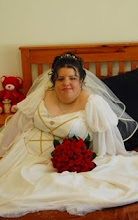You don't need to be a professional photographer to capture picture-perfect moments. Life is like a camera: Simply focus on the important things. Then make your photographs the centrepiece of a meaningful album. Here are some helpful tips.
Composition Tips
Keep your camera ready
Keep the camera close at hand to capture the big and little moments in life. Extra batteries are a must, too. And to make sure your images are free of imperfections, carry a photographic cleaning solution and lint-free paper to keep your lens clean.
Get close to your subject
Eliminate distractions and background noise by getting close to your subject. When photographing children, get down to the child's level.
Remember the basics
The rule of thirds works well as you mentally set up your shots. For example, for an outdoor scene place the horizon one-third from the top or one-third from the bottom of your viewfinder. When taking a photo of a single subject, such as a person, place them in the left one-third or right one-third of the viewfinder.
Be patient
Take a few moments to walk around and look at the subject and the background. Notice how different angles and light affect how things look through your viewfinder. Think about what you want to remember from the scene and capture it.
Digital cameras also function using ISO standards. See your user manual for details.
Turn your camera
Instead of taking all of your photographs in a horizontal format, turn your camera to capture some shots in a vertical format. You can mount both horizontal and vertical photos in your Creative Memories album.
Hold your camera steady or use a tripod
Holding the camera steady and pushing the shutter button gently are necessary for sharp, clear pictures. A tripod will hold the camera motionless and allow you to concentrate on the composition of your photos. Camera Tips
When to use your flash
The flash will provide extra light when used indoors and will fill shadows and brighten colours when used outdoors. Using the fill-flash feature will accomplish this at a more subtle level.
Turning off the flash is just as important when natural or low light is preferred. You may want to capture a silhouette against a sunset, blowing the candles out on a birthday cake or capturing the scene around a campfire. These are all examples of when you would turn the flash off.
Reduce red-eye
Red-eye occurs when the camera flash reflects off the interior surface of the eye. There are a few ways to reduce red-eye. You could increase the overall lighting in the room. Or you could make sure the subject is not looking directly at the camera. Most cameras have a red-eye setting that will help reduce this problem by firing a pre-flash that allows the eyes to adjust before the image is captured.
Choose the right speed
Film is available in different speeds: 100, 200, 400, etc. The speed, or ISO rating, is a standardised way to define the film’s sensitivity to light. The lower numbers (100, 200, etc.) indicate lower film speeds.
The film speed roughly corresponds to the time it takes to snap a picture (shutter speed). A low film speed (200) requires the shutter to be open longer to gather enough light for a decent exposure. High film speeds of 400 or more are best for indoor shots without having to use a flash. For action photos (sports events), 400 or 800 ISO will give the best results. Digital cameras also function using ISO standards. See your user manual for details.
|




No comments:
Post a Comment